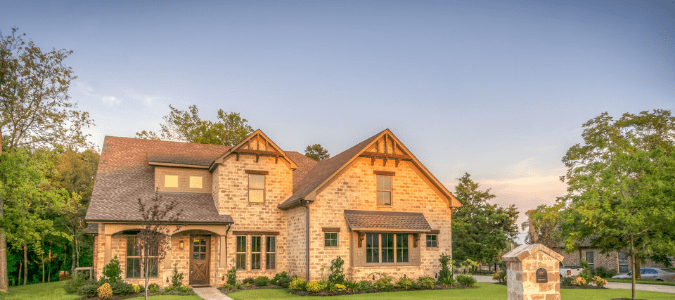Do Termites Make Noise? Your Questions Answered
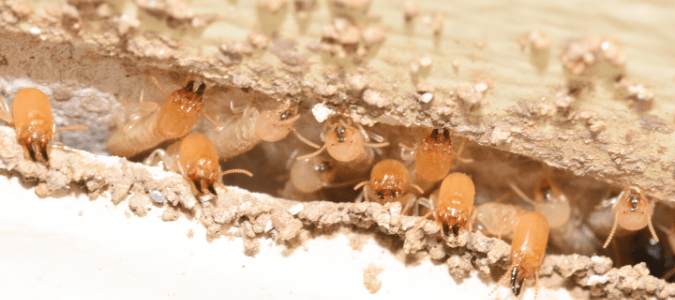
This may come as a surprise if you consider that a colony of these small, winged insects can easily number in the thousands, after all, if not the millions, and together they can chew through enough wood to cause major property damage. In fact, it is estimated that termites cost American property owners $5 billion in damage every year! With that kind of power to bring down major wooden structures, surely they can be heard bustling over one another and chomping through their breakfast, lunch and dinner, right?
It’s even more likely that if you are hearing noises generated by termites, the sounds you’re hearing are actually the sounds they make when they’ve been disturbed. When termites feel threatened, they make a fast-paced, dry rattling sound by banging their head against the nearest surface, whether they’re inside their mud tubes or inside a wooden portion of your home. This sound can be heard if it’s quiet enough and you have good hearing, and even more so if you know what you’re listening for.
However, because this sound is hard to hear, it’s a good idea to have a pest control specialist visit your home if you suspect you may have termites so they can make a thorough inspection and determine whether your assumption was correct—or whether it might be a different type of pest that’s making noises in your walls or ceiling.
There are many other types of pests that can make scratching, squeaking or scurrying noises in your walls. In fact, if you hear noises coming from some interior part of your home, it’s far more likely to caused by something other than termites, simply because other creatures are typically easier to hear than termites. Mice, rats, squirrels and raccoons have all been known to find their way into people’s attics, walls, garages and other spaces, where they may build nests and reproduce.
Sometimes people hear the noises these animals make inside their walls, floors or ceilings. Other times, they might not hear anything themselves, but instead notice their dog or cat staring fixedly at a seemingly random point, as if the pet can hear something the person can’t.
Another way in which sound and termites can be related is the fact that termites can consume so much wood in your home, attic or garage that they create spaces that are audibly hollow when knocked upon. If you knock on what should be a solid piece of wood and instead hear a distinctly hollow sound, it’s an indication that termites may have caused extensive damage within, and the wood will need to be repaired or replaced as soon as possible. Also, as termites chew on hardwood flooring and it becomes weaker and weaker, you may notice your floor creaking loudly in certain areas.
In any of the above cases, it’s a good idea to call in a professional for proper diagnosis of the problem, so the right approach can be determined to eradicate the pests and fix any damage they may have caused.
Because it can be difficult to determine whether or not you have a termite colony living in or around your home solely based on noise, we’ll now review other important questions regarding termites and termite infestations. In this post, we’ll discuss where these pests hide, how to differentiate between termite damaged wood and water damaged wood, whether these pests leave behind a smell and other signs that you might have these pests in your home.
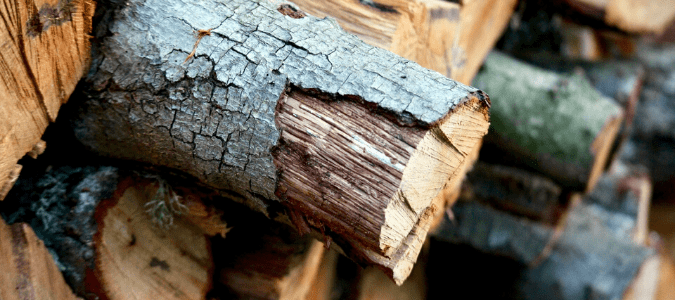
Where Do Termites Hide?
One common question among homeowners who believe they might have a termite infestation is, “Where could they be hiding?” Unfortunately, there are many potential spots in and around your home and property where termites might hide. First, an entire colony numbering in the hundreds, thousands or even millions could be hidden away in the walls, ceiling or floors of your home or garage.
Termites can also hide outdoors, in rotten logs or tree stumps, piles of firewood, deteriorating fences and the like. Subterranean termites typically build nests underground and connect their nests to your home—their primary source of food and water—via mud tubes, which are often found along the lower portions of exterior walls or your home’s foundation. These mud tubes hide termites from view, but the tubes themselves are visible and should be immediately identifiable by experienced pest control specialists.
Subterranean termites are the most common type of termites that cause extensive damage in people’s homes, but there is another type of termites called drywall termites that are also undesirable pests. Drywall termites don’t require as much moisture to survive as their subterranean cousins do. Because of this, these termites are often hidden away in the roof beams of attics and other areas where they might go unnoticed by the untrained eye.
Often, many homeowners don’t find termites until they find shed wings near window sills and lights.
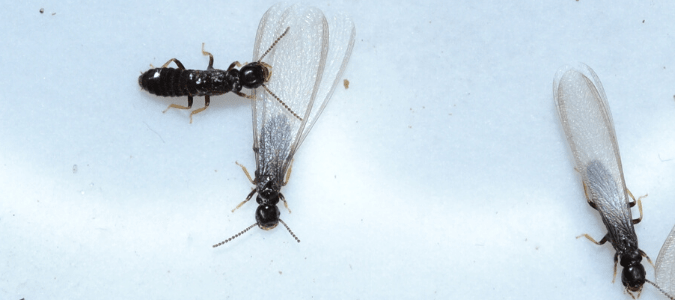
Signs Of Termites: Window Sills And Lights
If you notice little piles of tiny shed wings near a window in your home, they might have been left behind by termites. Window sill and light fixture areas are common spots for termites to shed their wings just after they’ve swarmed out of the nest to build new colonies, since they head straight for the first light they see. Often, that’s a nearby light or window. A scattering of tiny, hard droppings on your window sill that look something like sawdust could also be from drywood termites.
Spotting a termite swarm is the number one sign of a termite infestation, but since these insects swarm quickly, many people miss the actual swarm, and see only the aftermath—those little wings left behind on window sills or near a light that indicate swarmer termites were recently present. Mud tubes on your home’s foundation or the lower part of the exterior walls are another strong sign of a subterranean termite infestation, as is visibly damaged wood anywhere in or around your home.
But, how can you determine whether your wood is damaged from a piping or plumbing issue, or if your wood is damaged from termites?
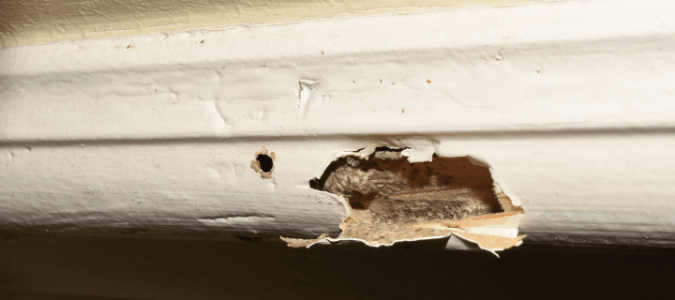
Termite Damage Vs. Water Damage
Sometimes it can be difficult for a homeowner to tell why a board, post or other section of their home, attic or outdoor deck has deteriorated. If you aren’t a pest control specialist or plumber, you might not know how to spot and identify the differences between termite damage and water damage. The effects of termite damage and dry rot also look similar. This is why it’s especially important to call on the expertise of a professional exterminator if you are unsure. One of these specialists can visit your property, inspect the problem areas, assess any damage and determine what type of insect or other pest, if any, has infested your living space.
Both water damage and termite damage can cause paint on wood to crack and peel. Subterranean termites need plenty of moisture to survive, which is why they build their nests within the wet earth. When they tunnel into painted wood, such as baseboards or windowsills, they can cause changes in the painted surface that might be the only visible indication of termite activity. This damage might also be mistaken at first for water damage.
One way to determine the cause of the damage is to look at the pattern of it. Is the damage going along the grain? If so, your problem is likely termites.
Dry rot is another type of damage to wood, caused by a certain type of fungi that breaks down the cellulose that makes up the wood’s structure. Termites also break down cellulose and damage the wood’s integrity as they consume its contents. While both dry rot and termite damage will spread over time if left untreated, a colony of millions of subterranean termites is arguably worse. These pests can definitely cause destruction to a home that is difficult and very costly to repair.
With the damage and moisture that these pests bring with them, you may be wondering if there is a smell that indicates you have termites in your home.
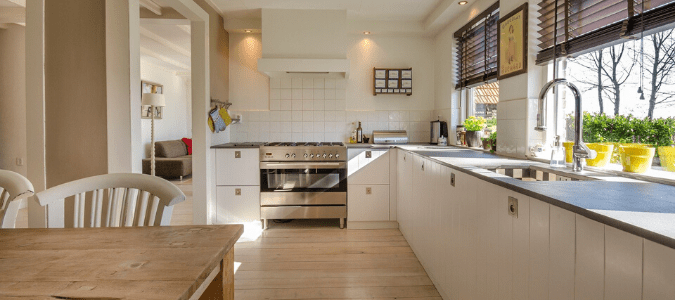
Do Termites Smell?
We know that termites do, indeed, make noise, but many people have also had the experience of detecting an unfamiliar smell in their home, attic or garage and wondering whether or not termites give off a smell. Could the strange scent they’re smelling be caused by a termite infestation, or something else? The answer is one that pest control specialists know well, and that is that termites do give off a unique odor. Many people experience it as a musty, somewhat fungal odor.
The damaged wood that termites leave behind might also give off an odor, since it is decaying. If the damaged wood is located outdoors, the termites may have damaged it in such a way that the wood collects water during a rainstorm. These conditions can lead to a musty or mildewy smell in the wood that is generated by the rotting process it’s undergoing.
If you suspect you might have a termite infestation somewhere in your home or elsewhere on your property, it’s of utmost importance to hire a licensed and trained technician who is well-versed in the signs of termite activity to determine the nature and extent of your issue. Scheduling regular termite inspections conducted by experienced pest control professionals is also a smart idea, as these inspections can help you avoid costly damage to one of your most valuable and important investments—your home.
Chem-Free Can Handle Your Termite Problems
Due to the potential damage termites can bring upon your home, often, the best route to take is to contact a reliable pest control specialist. The professionals at Chem-Free will be able to locate the termite colony residing in or near your home and will create a treatment plan that is customized to your property. Our method of termite control is low-impact and effective for nine years after application, so you can feel comfortable knowing that your biggest investment is protected.
Need Help Managing Pests?
Chem-Free offers both effective, low-impact pest control options and preventative measures to help avoid future infestations. Contact us today for a free estimate!
